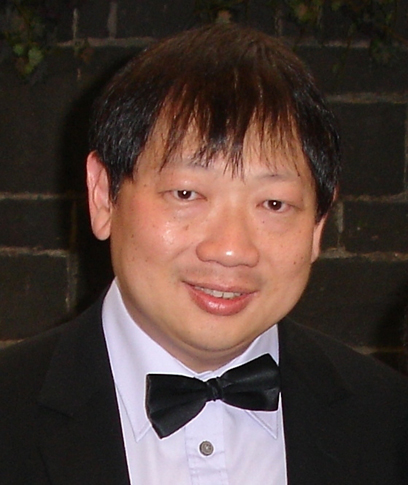A TRIBUTE TO JOE TJANDRA (1957–2007)
This issue of the Journal contains a series of articles about academic surgery. They are published as a tribute to Joe Tjandra (pictured) who was a long-serving member of our editorial board and a greatly valued colleague. His last project was to solicit articles about the future of academic surgery: Joe was particularly concerned about the need for academic surgery to be more entrepreneurial in the private sector. About a week before he died, Joe sent me the material that he had been working on. This has now been expanded and developed into the series of articles that appear in this issue.
All surgeons have a vested interest in the fate of academic surgery. Even surgeons who are solely committed to private practice ride on the back of the standing of their profession within society. All professions need a strong theoretical base; otherwise there would just be an uncritical handing down of skills from one generation to the next. We would all become modern day equivalents of the ‘Madonnaschnitzers’ (Baroque woodworkers who spent their entire working lives painstakingly carving replicas of the Madonna). The expansion of technology and super-specialization raises its own concern. As commented elsewhere: ‘if modern surgery evolved from the collective mobility of barber-surgeons, what is to stop it demobilizing into a collection of technocrats?’.1
Academic surgery has only been with us for a relatively short time. New chairs in surgery were established in the 1960s and 1970s. Pre-1970, except for the chairs that were established in Sydney, they were occupied by ‘imports’. There was an expansion of chairs occupied by Australian and New Zealanders post-1970; but, initially at least, the chairs mainly went to young antipodean surgeons who had recently worked with a ‘name’ overseas. At that time there was an emphasis on the need for benchtop research to help resolve difficult clinical issues and, although the efforts of individuals have been diminished by time and submerged by broad advances, that era set the scene for rapid advances in surgery. In the 1980s, the number of positions with universities began to fall and this resulted in a diminished pool of young academic surgeons, which created a major problem. There were difficulties finding adequate academic surgeons to fill either established chairs as they became vacant or new chairs created by the evolution of corridor hospitals into teaching institutions. As always, the lure of private practice also reduced the mobility of potential academic surgeons. More recently, there has been a swing away from the basic surgical sciences towards various forms of clinical investigation. Many universities have increased the number of honorary clinical appointments and this has been beneficial for surgery. After all, it is preservation of the relevant academic functions that is important, not just the preservation of academic surgeons as a species.2

The relatively short history of academic surgery in Australia and New Zealand has been accompanied by institutional conflict and contradiction. Straddling heath-care systems and universities is not easy. Health-care systems seem to lurch from crisis to crisis as administrators try to resolve short-term problems related to patient care. Universities have altered the traditions of scholarly exchange and academic freedom as they pursue enterprises that have a commercial and entrepreneurial spirit. Often, the institutions that we work for no longer seem to share our sense of values. It is impossible to work within these complex systems without experiencing incongruity, and isolation is a danger. Academic surgeons, in Australia and New Zealand, have been too diffuse, in both mind and place, to coalesce into an effective formal group. The Surgical Research Society for Australia and New Zealand initially succeeded in bringing academics together, but it has lost momentum.3 On a more positive note, the College has now formed a Section of Academic Surgery. The objectives of the Section are to foster goodwill among academic surgeons, provide a career pathway for trainees wishing to pursue an academic pathway and to develop a binational undergraduate curriculum in surgery.
What does the future hold for academic surgery? The articles included in this issue cover a range of perspectives. But there is a fairly constant theme, which many other groups in our communities are experiencing – we have to grapple with the problems and ambiguities created by change and still have enough energy, like Joe Tjandra, to seize the opportunities.




